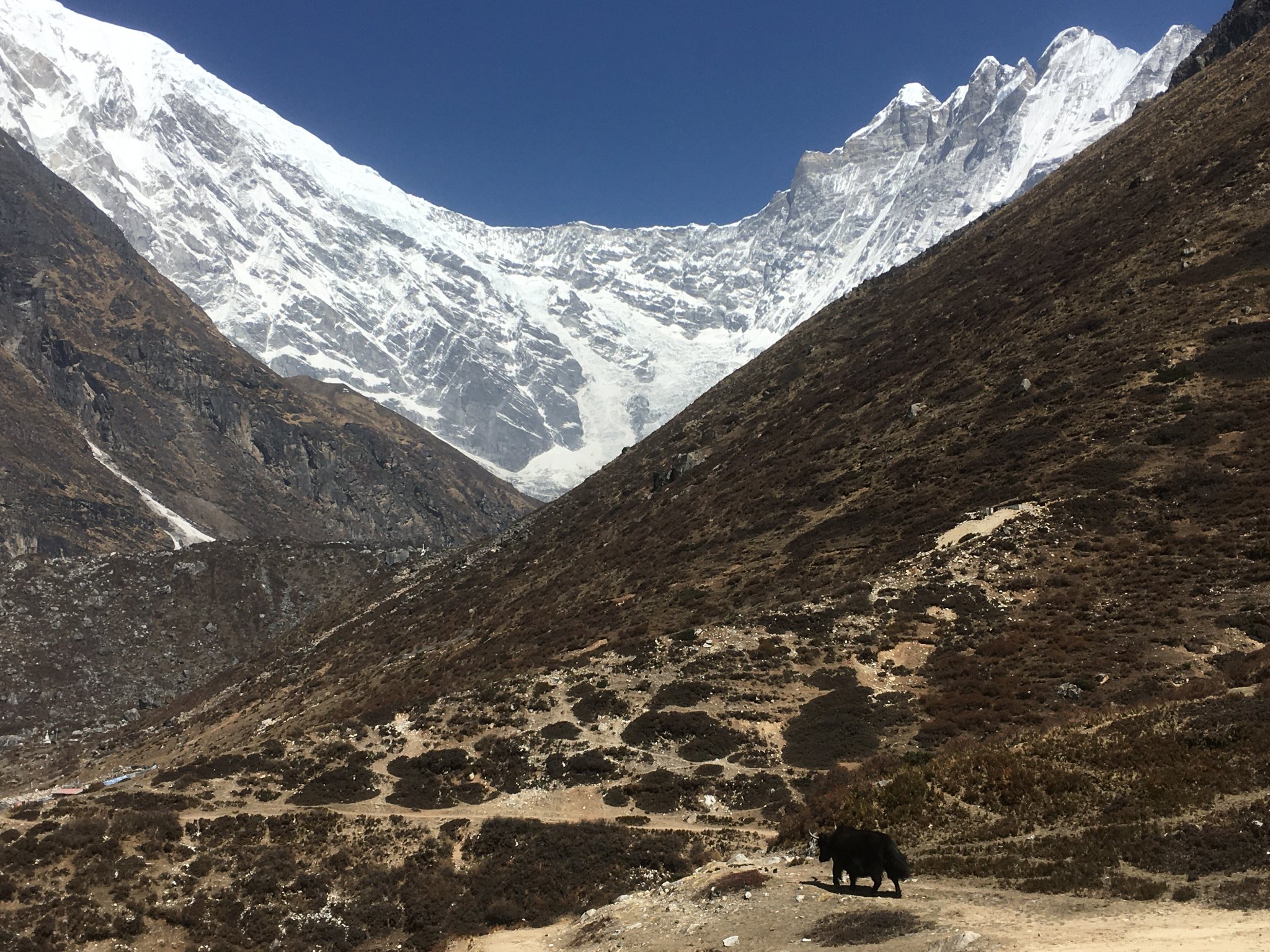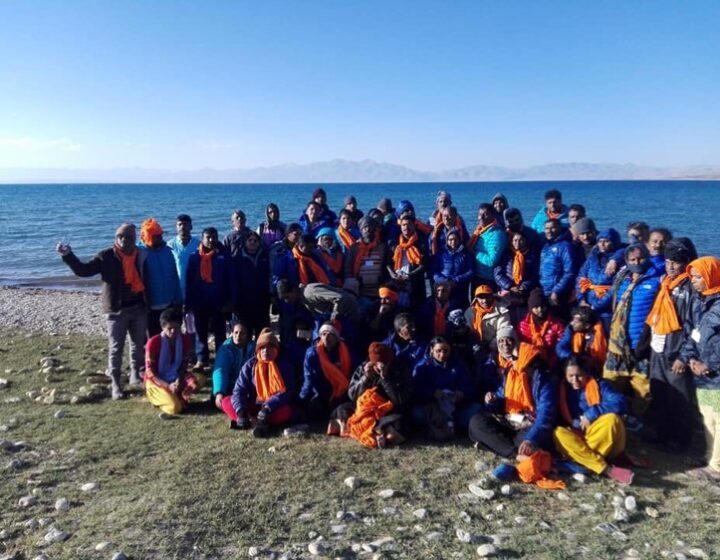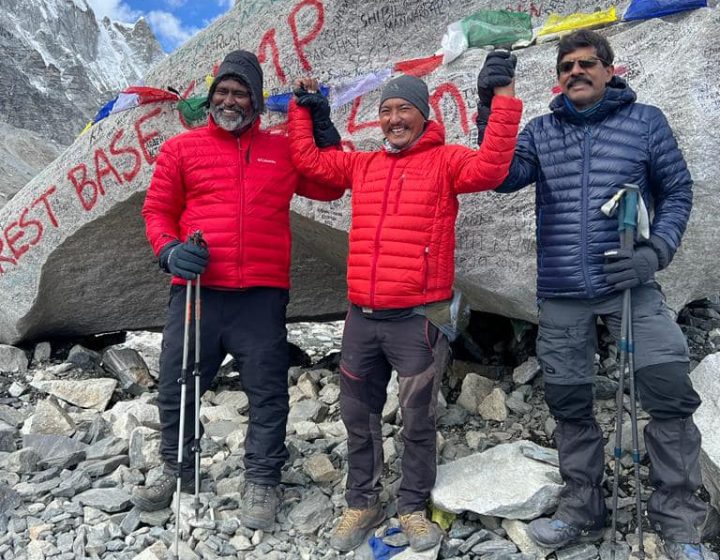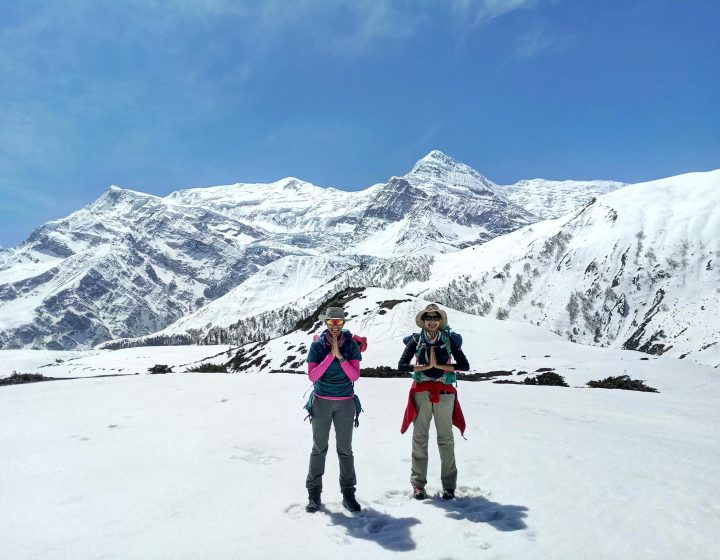Tour overview
The Langtang Gosaikunda trip joins the high-altitude lakes at Gosaikunda with the Langtang Valley trekking path. The first national park in Nepal was established in 1971 in this tiny valley, which is located not far from Kathmandu.
The walk is famous for its best combo offering of a popular and gratifying option where people who are looking to explore mid-range hills, meet the locals, and learn more about their cultures, lifestyles, and Buddhist and Hindu traditions are perfectly suited. The prevalence of Buddhism makes it possible to visit stunning monasteries like Shin Gompa, and a large portion of the road is flagged by mani walls and colorful prayer flags. Hindus hold Gosaikunda in very high regard, and it is popular with pilgrims.
On the journey to the Tamang village of Langtang, you pass through a variety of farmed plains, oak and rhododendron woodlands, and even cross a glacier moraine. The valley between the two mountains of Langtang and the Jugal Himal is one of the most beautiful in the world and is renowned for its stunning and distinctive peaks. The majority of the journey is spent in semi-tropical forests, where luxuriant ferns and orchids cling to tree trunks and moss covers the ground. Thousands of Hindu and Buddhist pilgrims visit the holy lake of Gosainkunda during the August full moon to take a dip in its chilly water.
You drive to Syabru Bensi for this trip in the morning from Kathmandu (Around 8 hours). You initially take the path that leads to Kyanjin Gompa and the Langtang valley. After there, you continue the last portion of the old path, which takes you to Gosaikunda Lake. You will hike back to Sundari Jal until the bus station and take the bus back to Kathmandu after visiting Gosaikunda Lake. The trekking in Langtang Gosaikunda is well worth it and satisfies your desire for adventure. In other words, the Langtang Gosaikunda walk offers a singular synthesis of scenic beauty and rich cultural heritage.
Itinerary
A representative of Crystal Mountain Treks will meet you at the arrival gate of Tribhuwan International Airport with a placard. After that, you'll be driven to your accommodation in Kathmandu. When you get to the hotel, you can relax and recharge because the rest of the day is free. You will be treated with a welcome meal in the evening (included)
Drive to Pashupatinath, Nepal's most revered Shiva-dedicated Hindu temple, with its two-tiered golden dome and silver gateway, after breakfast. Shiva, which means "The Auspicious One" and is also known as Mahadeva (the "Great God"), is a well-known Hindu god and is regarded as the Supreme God within Shaivism, one of the three major schools of Hinduism. Along the Bagmati River's banks are likely to be many ascetics and Sadhus, as well as a Hindu funeral.
The next stop is Bhaktapur, which is also known as the "City of Devotees," the "City of Culture," the "Living Heritage," and "Nepal's Cultural Gem." Bhaktapur is situated in the Kathmandu Valley, about 20 km east of Kathmandu. It is one of the Kathmandu Valley's three royal cities. Bhaktapur, which is a UNESCO-designated World Heritage site, has undergone extensive restoration since a devastating earthquake struck the city in 1934.
Final preparations for your climb up Langtang are made in the afternoon.
Early in the morning, board a chartered vehicle for the 7-8 hour trip to Syabrubesi, where our walk begins. Despite being only 82 miles (132 kilometers), the majority of the route is on unpaved jeep track. Following the 2015 earthquake, the Nepal-Tibet border at Kodari-Zhangmu (east of Kathmandu) was closed, and the Kodari highway is no longer used to enter Tibet. The new entryway into Tibet is Kerung, which is slightly above Syabrubesi, and there are currently plans to extend this roadway.
The journey continues today, and you quickly arrive in the settlement of old Syabrubesi after crossing a suspension bridge over the Bhote Koshi. After crossing another bridge over the Langtang khola, begin your ascent over a number of landslides, many of which were brought on by the 2015 earthquakes. The route today and tomorrow mostly follows a river through forests that are home to a variety of wildlife, including wild boar, red pandas, langur monkeys, and Himalayan black bears. Most likely, you'll eat lunch at Bamboo, where you may see wild bee combs on the rocky rocks across the river.
After lunch, there is a steady ascent with sporadic severe ascents until you reach Lama Hotel, where you can camp.
The trail keeps upward through dense oak, maple, and rhododendron forests. Directly ahead, Langtang Lirung is discernible. As you pass Ghoda Tabela, a former settlement for Tibetans, the terrain soon becomes more sloping. After ascending to Thanshyap and continuing your trek up a steep hill, you will reach Langtang village. The location of the massive landslide caused by the 2015 earthquake, which buried numerous residents, hikers, and military personnel, lies right before you approach Langtang village.
The valley widens as the route gradually ascends. Ascend a moraine to get a view of Kyanjin Gompa and the icefall falling from Langtang Lirung and Kangshung peaks. Cross a further slope and descend to Kyanjin Gompa, where you will see an unsightly collection of concrete lodges, the majority of which were constructed following the earthquake.
We go on a hike today to Tsergo-Ri, which is 4985 meters high. After breakfast in the morning, we begin. After around 30 minutes of level walking, you pass a little brook. After roughly three and a half hours, the trail steeply ascends while offering panoramic views of the snow-capped mountains. With the Langtang Lirung, Nayakhang, Gangchembu, Ganja-La range, Yala Peak, Langshisha Ri, and other snow-capped peaks in your view, it is wonderful. Take a packed lunch from your lodge if you plan to spend a lot of time up top and further explore. After having fun, it takes around 2.5 hours to descend to the lodge. Spend the night at the lodge.
The path descends past yak pastures till it reaches Langtang, where it crosses a suspension bridge and climbs back up to Thangshyap. Once more, you follow the track through the woodlands until you arrive to Godatabela, which takes approximately an hour. Here, lunch is on you. The trail continues to descend till the Lama Hotel after lunch. Spend the night in a hotel
It takes us around 3 hours to reach Pairo as we continue going along the forest track. Here, lunch is on you. You omit the Syabrubesi trail after lunch. It takes roughly two hours to go to Thulosyabru along a steep trek. You can now see peaks like Ganesh Himal, Langtang Lirung, and other mountains in exquisite detail. You can visit a monastery with your guide in the evening. Spend the night at the lodge.
After taking a lunch break at Phoprang Danda, which has the best view of the sun setting over Ganesh Himal, the trail continues through a pleasant uphill and a blue pine forest via a government agriculture office. The trail is steeply uphill until it reaches Phoprang Danda at a height of 3190 meters. Also known as Chandan Bari, Sing Gompa. There is a yak cheese plant we can visit. Spend the night at the lodge.
The path ascends steeply as it leads to Chholang Pati. And don't forget to look back for a breathtaking panorama of the Tibetan mountains, Langtang Lirung, Manaslu (8156m), Ganesh Himal Range, and Annapurna. The slaughter of animals, lighting of woodlands, and grazing of goats are prohibited as you are now in the Gosain Kund protected area. The ascent to Gosain Kunda is gradual and steep once more.
(Trek start early in the morning)
The trip's longest and most interesting trekking day is today. The highest point of our trek, the difficult Lauribina La Pass (4,610m), will be crossed by us. After departing from the revered site of Gosaikunda, we will go across rocky rural trails and pass a number of further tiny glacial lakes until arriving at the foothills of Lauribina La Pass. Take a hard trek up to the pass' summit to observe one of the trip's most breathtaking views. The towering Manaslu peak, Ganesh Himal, and Langtang Lirung Peaks are just a few of the breathtaking mountain views you should keep an eye out for. We will next descend sharply to the community of Phedi while photographing these lovely moments. Before reaching the community of Ghopte, we will travel on a trail that is a bit gentler before passing through meadows, alpine vegetation with pine and fir trees, caves, and prayer flags. Continue to sleep in Ghopte.
Today, when we travel to Kutumsang, our last goal for the day, we will reach the Helambu region. To go to Thadepati, start off from the village of Ghopte and travel along the trail through a forest of pine incense and rhododendron trees. You'll also have to walk on rocky paths up and down the track. Reach the summit of the Thadeapti Pass by ascending steeply, and you'll be rewarded with stunning vistas of the Himalayas, including the Ganesh and Langtang Mountains. As you move through sections of deep woodland, descend from the pass' peak and into the Helambu region. As you approach Kutumsang, you can enter and exit the Langtang National Park by its southern boundary. Continue to sleep in Kutumsang.
After leaving the Sherpa and Tamang-dominated Kutumsang village behind, we start our journey by trekking up a mountainside and through verdant forest areas before descending to Pati Bhanjyang hamlet, which is populated by the Brahmin and Chhetri population. We will arrive at the Chisapani trekker's junction after traversing the twisting trail with the uphill and downhill trek via the small communities and sections of woodland. Being in this location also affords you the wonderful opportunity to witness the sunset over the Himalayan panorama, which includes the peaks of Langtang, Jugal, Manaslu, and Annapurna.
After breakfast, we'll continue to the Sundarijal trailhead and descend before ascending a stone staircase to reach Shivapuri National Park's natural sanctuary. In order to get to the tiny community surrounded by a waterfall, a cool environment, and a roaring river, we must journey through a deep forest rich in oak, rhododendron, pine trees, a watershed, and a tranquil environment. Our brief and exciting journey will come to a conclusion after an hour-long picturesque drive back to Kathmandu. Continue your stay in Kathmandu.





